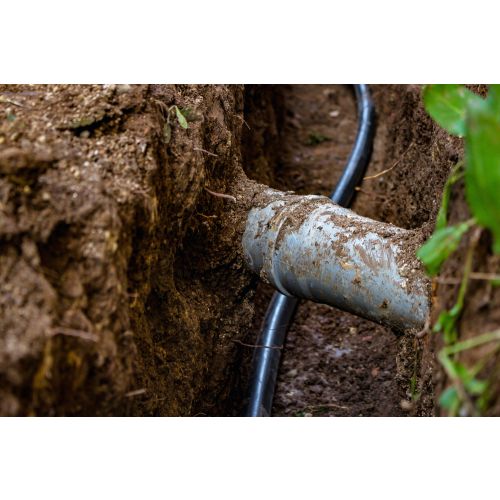How To Tell If Your Soil Pipes Are Blocked
Suspect your soil pipes are blocked? Here’s how you can tell and what to do about it
Soil pipes are a vital part of every plumbing system.
Being hidden within the walls and under the floors of your home, it’s likely you haven’t given them a second thought. After all, considering the dirty work they have to endure, ignorance is bliss.
But without them, we wouldn’t be able to run our taps, fill our baths, or flush our toilets. It's only when they become blocked that we realise just how important they are.
In this post, our experts here at Total Pipes walk you through some of the tell-tale signs you can look out for if you suspect your soil pipe is blocked, as well as some tips on how you can repair it.
What causes soil pipe blockages?
There are many different reasons why blockages occur, but they’re most often caused by non-flushable items, like wet wipes or sanitary products, that stick together and collect at the bottom of your soil pipe.
Of course, soil pipes are subject to general wear and tear over time, so they’re bound to get clogged up and need maintenance at some point or other.
How can I tell if my soil pipe is blocked?
Fortunately, there are ways you can tell if your soil pipe is blocked, and by looking out for the following signs, you’ll be able to contact a professional to rectify the issue before it gets worse:
- Your toilet not emptying at its normal speed or remaining blocked for a long time
- Sinks, showers, or baths don’t drain water effectively
- A bad smell coming from your drains
- Water leaking from the joints of the soil pipe
- Overflowing, dirty water at the bottom of the pipe
Repairing a blocked soil pipe isn’t for the faint of heart, so if you’re planning a DIY job, you’ll need to muster up a bit of bravery.
How do I fix a blocked soil pipe?
Before you get to work unclogging your soil pipe, it’s important to make sure that you have all the correct equipment – including protective clothing and a face mask.
If you have a plastic soil pipe (most modern ones are made from PVC), the first step is to locate the ‘cleaning eye’. This is a large hinge found where the branch pipes join the main stack.
Once you’ve found it, you can unscrew it and insert a drain auger – a tool used in plumbing catastrophes in which a plunger won’t be able to do a sufficient enough job.
Pass the auger through the pipe until you reach the blockage. Once you’ve found it, crank the handle. This should release a coiled wire.
Then, you can push and pull the auger, and the wire should remove the blockage, allowing backed-up water to flow freely once again.
Can blockages be avoided?
Fortunately, there are a couple of things you can do to keep soil pipe blockages from happening.
It’s as simple as being mindful of what you’re flushing down toilets and pouring down sinks.
Almost any liquid-like substance, including tea, coffee (without the grounds), and milk can be poured down sinks safely, but fatty oils and leftover foods are a no-go.
As for your toilet, there are only two things that are safe to be flushed:
Toilet paper and natural bodily waste.
Flushing anything else, like baby wipes, feminine hygiene products, or cotton pads is a sure-fire way of your soil pipe getting blocked, so make sure to dispose of these kinds of items separately.
Need further advice?
Here at Total Pipes, we’re big advocates of DIY jobs, but there are some things that should be left to the professionals – plumbing being one of them.
One tiny mistake could lead to nasty faults within your home’s plumbing system and costly repairs, so it’s best to let a plumber deal with bigger blockages from the get-go.
If you’re in the market for a new soil pipe and are unsure which type you need, we’re here to help and more than happy to guide you through the buying process.
Give us a call today on 01254 382 000, or send us a message via email to sales@totalpipes.co.uk and we’ll get back to you!

